





















Presentation of Guadalinex.

Copyleft © Juan Rafael Fernández García, of OFSET. October 2007.
Good question, perhaps a bit late

So what?
I have come to speak about our Guadalinex project and how ICT schools using free software are managed and teachers trained in Andalucía.
The Guadalinex Project Glossary
Actually we should be speaking of the And@red Plan (the project's real name, And@red standing for Andalusian Educational Network), which started in 2003 with the introduction of computers running free software in the schools in the Spanish region of Andalucía.
The And@red Plan is a consequence of Decree 72/2003 of Measures to Encourage the Knowledge Society.
We call the schools in the project ICT Schools. These are schools whose staffs have signed a commitment to receive training and to use the new tools.
So what is Guadalinex?
The question ‟What is Guadalinex?” has an easy answer (remember I'm smart? I'm a teacher): it's a compound word, with two (three?) constituents: Guada - Lin(e)x
 Guada-, like in most rivers in Andalucía, including the
main one, the river the Romans called Betis and we call
Guadalquivir
Guada-, like in most rivers in Andalucía, including the
main one, the river the Romans called Betis and we call
Guadalquivir
+ the Linux from EXtremadura, our sister region
in free software.
Thus, by etymology
Guadalinex is the Linux distribution created in Andalucía by the regional government, with an origin in GNU Linex, the distribution in Extremadura.
But etymologies don't explain the present, do they?
The history of ICT in the Andalusian educational system
The Guadalinex project is not the first project having to do with ICT and education in
Andalucía

But some lessons had been learnt this time
2003: A revolutionary Bill is passed
On March 18th 2003 the regional parliament of Andalucía passed Decree 72/2003 of Measures to Foster a Knowledge Society
Article 31: 1. Whenever computer equipment for the educational usage of schools will be purchased, all hardware will have to be compatible with operating systems based on free software. The computers will be pre-installed with all the free software that is necessary for their intended uses. 3. The administration of the autonomous region of Andalucía will foster the spread and personal, home and educational use of free software. To this purpose an Internet help service will be created to give advice for installation and use of such software.
What have been the consequences of the Decree in education? Do you want to see what we have done, the lessons we have learnt? Please come along on our trip to Andalucía.
Get the Flash Player to see this player.
Some introductory figures
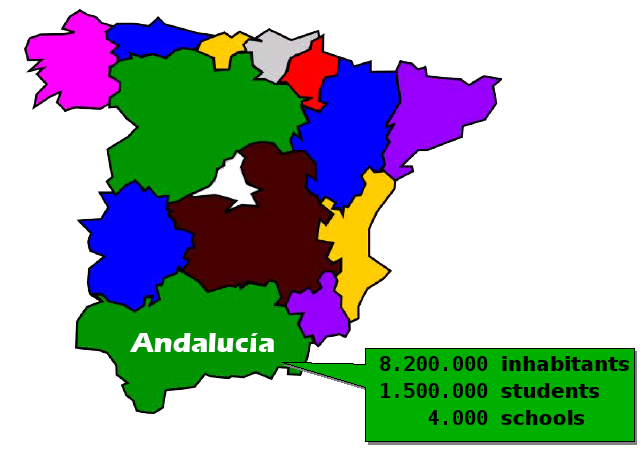
| Andalucía | Indiana | |
|---|---|---|
| Area | 87,268 km² -- 2nd ES | 94,321 km² -- 38th US |
| Population | 8,039,399 (2007) -- 1st ES | 6,313,520 (2006 est.) -- 15th US |
| Density | 92.12 inhab./km² | 65.46 inhab./km² -- 16th US |
| Unemployment rate | 13.85% (the Spanish average is 9.16%) | 4.8% (Aug. 2007; US: 4.6%) |
| Per capita Income | ~US$23,120 (just 75.5% of the UE-25 average, qualifies for European aids) | US$31,150 (2005) |
Underlining Some Facts
With an unemployment rate of 13.85%, a per capita income of US$23,120, Andalucía is one of the least rich regions in Europe.
The Project was designed to fight this situation, in three senses:
But you ain't seen nothing yet, shall we visit an ICT school?
Six Key Items
Get the Flash Player to see this player.
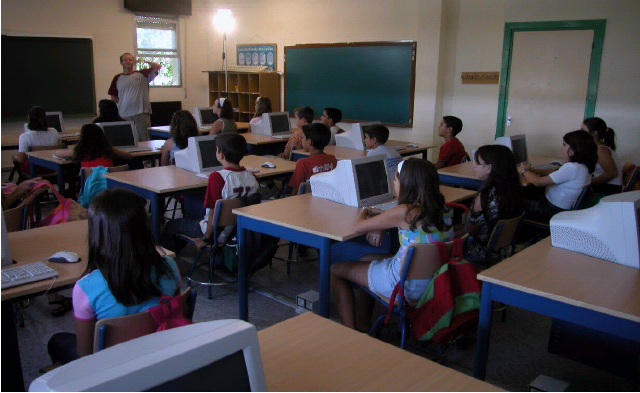
As many computers as the school staff thinks necessary
(four modes are possible: one desktop every two students,
ICT corners with two/three computers,
desktops for groups of 6-8 students or shareable laptops)
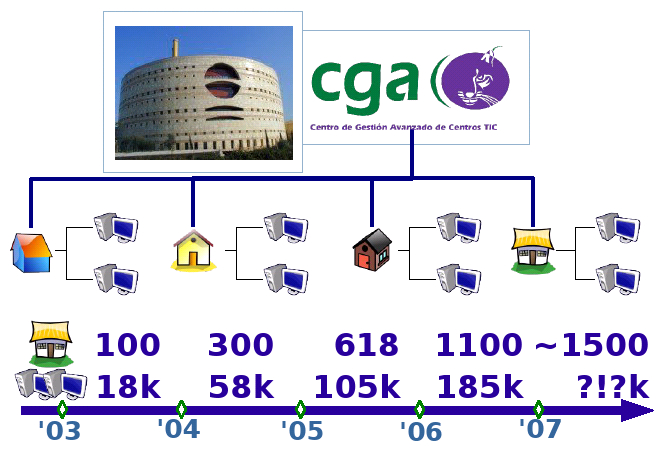
A huge single network, administered centrally (it is planned that in a few years all
Andalusian schools will be ICT schools).
Two servers in each school, providing
firewire, proxy, cache, NFS homes and contents service.
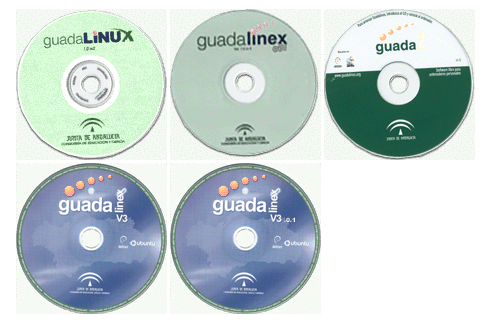 As we said Guadalinex is the name
of the customized distribution of
the regional government of Andalucía.
As we said Guadalinex is the name
of the customized distribution of
the regional government of Andalucía.
Developed by local companies through a public tender (the tender for V5 was announced on the 28th of September), the present version, V4.0, is an Ubuntu derivative that had an open development.
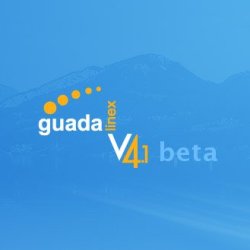 V4.1beta,
an update to Feisty Fawn with brand new festival voices for Spanish, is already
available for downloading and testing.
V4.1beta,
an update to Feisty Fawn with brand new festival voices for Spanish, is already
available for downloading and testing.
For a survey of distributions, see
The
Spanish Experiment, Year IV. A Survey of Spanish Institutional Distributions for Education.
But (surprise!) Guadalinex V4 is not the distribution used in the ICT schools
these days. It was universally demanded and decided that V3
should be the distribution used one more year.
 Why?
Why?
1.- Upgrades are difficult. Remote massive upgrades are a nightmare.
2.- Generic distributions, even if they include some school useful tools or a client-server infrastructure like ltsp, are not educational iff
3.- The agency responsible of managing Guadalinex in the schools needs time to adapt the new version to the And@red infrastructure and hardware, to create the educational packages missing and to install the new distro in the computers of the new schools in the project, plus upgrading the old ones.
4.- Teachers want a stable system.
The Advanced Management Centre (in Spanish CGA) of ICT Schools was born as a consequence of the services mentioned in articles 4, 6 and 15 of Decree 72/2003.
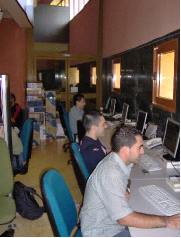 Its tasks are
Its tasks are
After five difficult but fascinating years it is clear now that
without the work of the CGA there would be no ICT schools any longer.
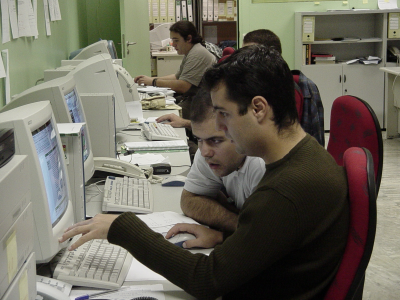
Not only they have been efficient, they have created friendship links with the ICT coordinators of the schools. This had to be mentioned.
We mentioned the management of the network. This is done by using two kinds of tools and strategies
Documentation for the especial CGA tools: «El Centro de Gestión Avanzado: Gestión centralizada en los ordenadores de los centros TICs de Andalucía»; «Centro de Gestión Avanzado (CGA): La gestión organizada en los ordenadores de los centros TIC´s en Andalucía»; «Adaptación ITIL a la Gestión del CGA». A document in English is «Large-Scale Linux/GNOME Deployment in Andalusian ICT Schools». The tools designed for the use of the coordinators are documented at the CGA site.
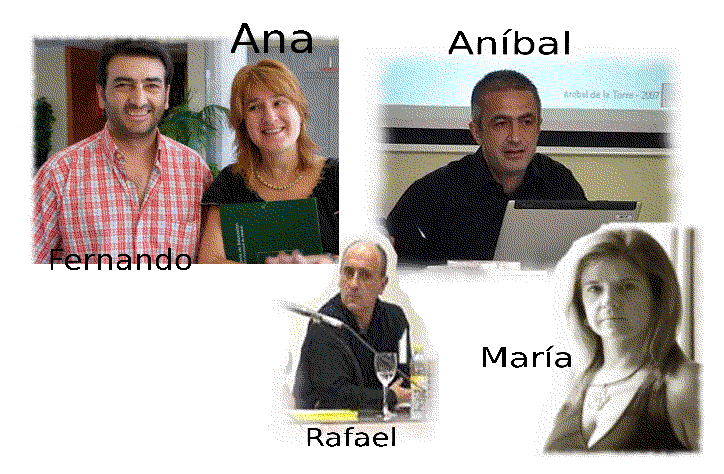
No-one in the school is supposed to be a hacker - ICT coordinators are teachers. These are five out of hundreds.
In theory, the coordinators' task is the pedagogical dynamization of the schools (sic). In practice they (or an ICT coordination team) have to recognize technical problems, call the helpdesk or cope with petty hardware glitches, and administer the local accounts and the school's LMS.
The Effort in Numbers

Teacher training in Andalusia, organized by the regional educational authorities, is free for all teachers in 32 training centres.
Over 20% of the whole training effort (courses, conferences...) is allocated to ICT training.
ICT schools have priority in training demands, and a training advisor is assigned to each school.
The Effort in Examples
 Several kinds of training activities are organized, inline and online.
You are invited to visit the
network of
training centres' webpages.
Several kinds of training activities are organized, inline and online.
You are invited to visit the
network of
training centres' webpages.
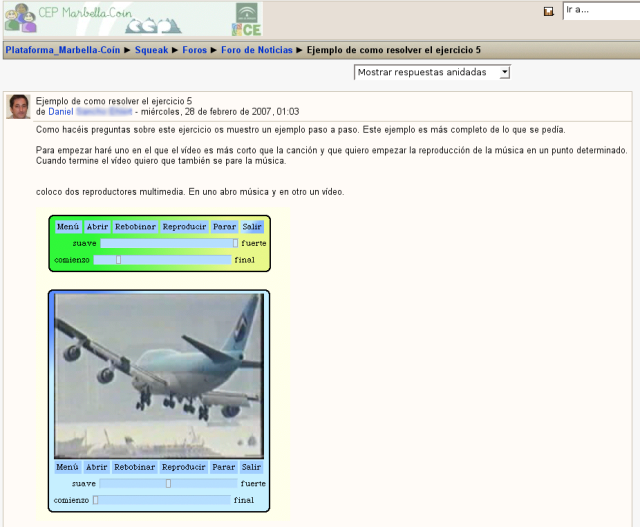
But the most important objective of the training system is the creation of a
collaborative network of teachers, the basis for the
construction of free shared educational knowledge.
 Averroes, "The Andalusian telematics network"
is the name of the educational portal of Andalucía.
Averroes, "The Andalusian telematics network"
is the name of the educational portal of Andalucía.
Although the portal has existed since 1998, providing news, resources and hosting to the schools, we have had access to the alfa versions of the new Averroes, full of new and interesting possibilities.
RSS feeds and the active participation of the teachers are key features of the new site.
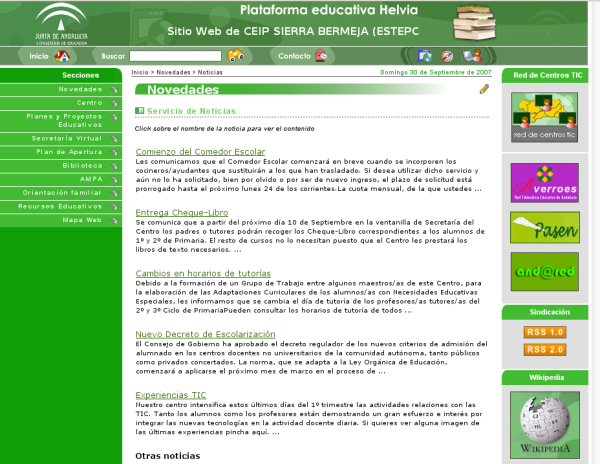 Helvia,
the "educational platform", is the Learning Management System
installed in each and every one of the ICT schools.
Helvia,
the "educational platform", is the Learning Management System
installed in each and every one of the ICT schools.
A scheduled-to-be-freed development of e-ducativa, it provides an e-learning environment for teachers and students, blogging facilities and tools to write and host the school's web page.
The design is that of a network of interconnected servers, permitting to move through the nodes of the network.
Pasen (Spanish for "come in") is an interface for the communication with the students' parents.
It provides mentoring facilities (information about attendance, behaviour, marks but also planning homework for the ill, etc.).
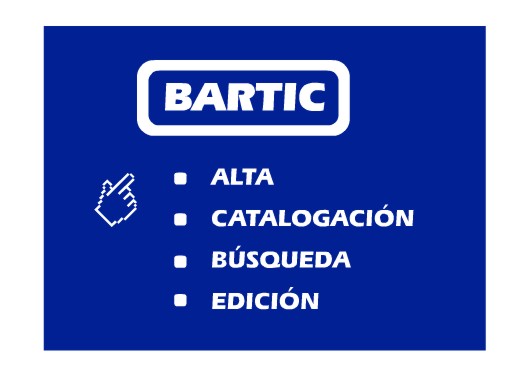
Of the tools soon to be announced, BARTIC is the most demanded and the longest
waited for.
BARTIC will be (in fact it is starting to be) a resources repository and indexer.
The idea behind it is to create an index of the quality resources already in Averroes,
as assessed by experts in each of the educational fields, and after that to
start adding new valuable resources.
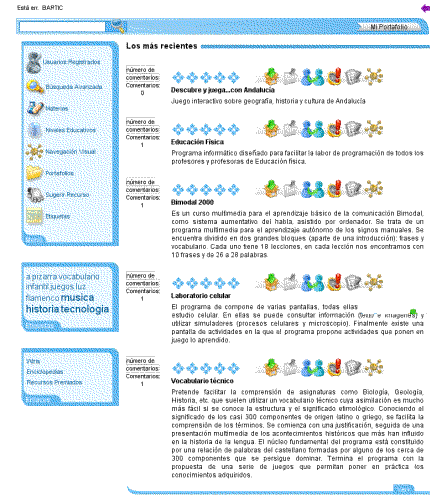
Of the tools soon to be announced, BARTIC is the most demanded and the longest
waited for.
It will permit social tagging, tag clouds and even personal portfolios.

Free software in schools, two independent challenges often mixed up:
Teachers need the same software at home and at school (to prepare lessons and gain self-confidence). But emphasis on the OS is a mistake:
Need for real educational distributions: tools to reuse and share resources (browse, find, use, assess, adapt, improve, comment...)
Need for a previous reflexion on the role of computers in schools. Just a tool? That means nothing

Legal Note: this document has a Creative Commons 2.5 Licence with clauses Recognition - Share alike and Spanish jurisdiction.
All the tools used to create this presentation (especially Slidy) and the resources used are believed to be free, at least for non commercial usage. Please inform me of any mistake you find.
Thank you for your patience.
Doubts, questions, suggestions...?